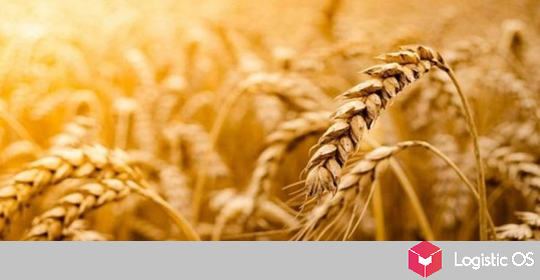The Ministry of Agriculture of Russia is discussing the possibility of not applying quotas for the export of grain in the 2020-2021 agricultural year.
The situation, and with it forecasts, on the wheat market changes almost daily, which is greatly facilitated by the first data obtained on the collection of grain from a new crop.
Experts record a steady decline in export prices, although, at the moment, they are still higher than last year.
In the week of June 17-24, the price of new-crop wheat (12.5% protein) reached the level of $ 198 per tonne, in 2019 — $ 192 per tonne.
Contracts for July are almost concluded, the price of deliveries in August is still at around $ 195- $ 198 / t.
The wheat exchange market also showed a decrease: in the week of July, futures for wheat in Chicago lost 4.1% to close the previous week and amounted to $ 176.8 / t, September futures in Paris was slightly more stable with a loss of 2.3% ($ 201.7).
In the domestic market, the price is unstable: depending on the region, they operate somewhere on the prices of the previous harvest, and where harvesting began, the price approaches new ones.
So, the central regions show the level of 10.5-10.9 thousand rubles / ton (EXW excluding VAT).
And the south of Russia, where the harvesting company has already begun, recorded demand with delivery to the elevator — 11.3-11.9 thousand / t.
So far, the estimated prices for the new crop for delivery to Novorossiysk by rail in August have slightly decreased: 11.25 thousand rubles / ton for the South, 10.5 thousand rubles / ton for the Center, 10 thousand rubles / ton for the Volga region (Saratov) and 9 thousand rubles for Siberia.
This indicator is 2.8-3.45 thousand / t lower than last year.

What happens to export prices in the world at large?
To date, the average current price for French wheat of the new crop is $ 204 / t ($ 2 less than a week earlier), Ukrainian — $ 198.5 / t ($ 3 lower), American — $ 206 / t (minus $ 1).
The World Market Price Monitoring Agency (MARS) predicts a decline in the yield of European wheat due to weather conditions and a decrease in sown area.
For example, for France, the leading exporter in the EU, the forecast was 30.3 million tons (last year the country produced almost 39.5 million tons).
And according to general forecasts, the yield of wheat in the European Union will decrease by 10% to 117.2 million tons.
In this situation, with a projected increase in the crop in Russia by 4%, our country has every chance of becoming the leading grain exporter in the world.
Against this background, the discussion by the Russian Ministry of Agriculture of the possible non-use of quotas for grain yields above 125 million tons gives even more optimistic expectations.
And although the data on the collection of the new crop, which is received today, is much lower than last year: a little more than 270 thousand tons of wheat were threshed (by this date last year the figure was 2.5 million tons), this does not reduce the optimism of specialists.
The fact is that the harvesting of the new crop this year began with a considerable delay: the adverse weather and the restrictions associated with the coronavirus affected it.
The Ministry of Agriculture adheres to the forecast of a total harvest of at least 122.5 million tons (wheat 75 million).
The International Grain Council is slightly less optimistic in the general forecast — 120.4 million tons, and the forecast for wheat is slightly higher — 79 million tons.

